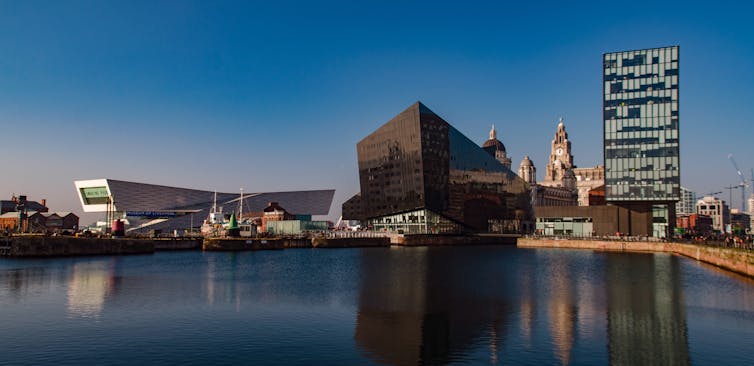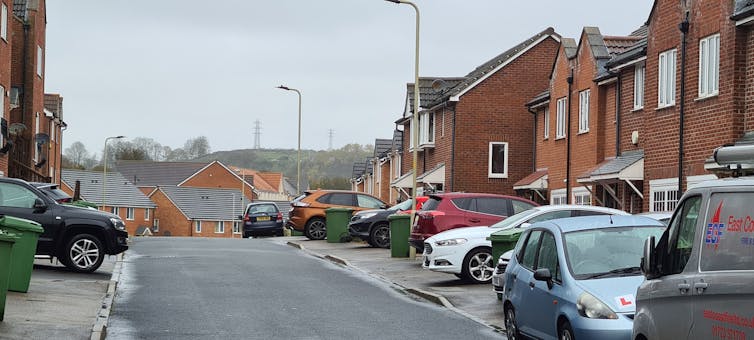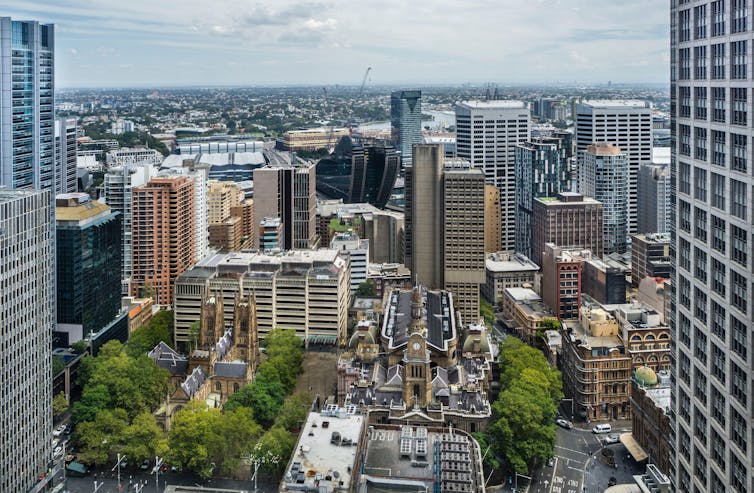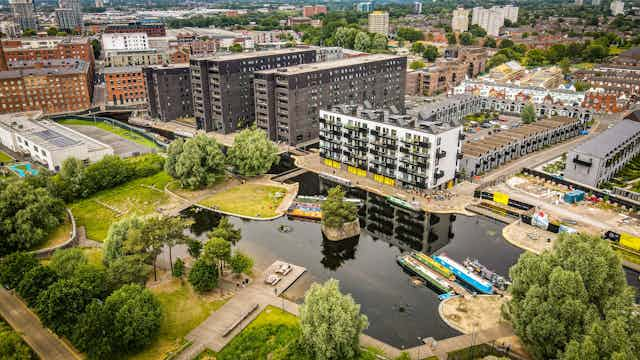In 2021, the UK government made beauty an explicit objective of the English planning system. The Levelling Up and Regeneration Act, which received royal assent on October 26 2023, now requires local authorities to use design codes to deliver beauty in new developments.
Driving this emphasis on beauty (which is likely to be strengthened through further planned revisions to national planning policy) is a particularly knotty problem in England’s approach to housing. Everyone agrees that more housing is needed, but no one wants it to be built near them. The government’s hope – as the secretary of state for levelling up, housing and communities, Michael Gove, has put it – is that “communities will welcome development when it is beautiful”.
English towns and cities do desperately need attention. A 2019 national audit by advocacy group Place Alliance found that, in terms of design quality, new housing developments are overwhelmingly mediocre or poor. Office buildings converted under permitted development rights into housing have been characterised by the campaign group Town and Country Planning Association as creating “slums of the future”.
Meanwhile, outstanding heritage assets are being harmed by insensitive new development. And under-resourced local authorities are in no position to help because they have so little design expertise.

There is mounting evidence that buildings and places have a profound influence on public health and wellbeing. The British designer Thomas Heatherwick has gone so far as to claim that boring architecture has brought us “misery, alienation, sickness and violence”.
The government is right to expect more of development. However, it is debatable whether beauty should or realistically can be a planning objective. My research looks at how planning rules influence the design of the built environment. The best way “to build beautiful” – to reprise Gove’s leitmotif – might be to regulate design processes, rather than outcomes.
The problem with beauty
Design codes establish detailed requirements and rules for how sites or areas are developed. They exist to improve design standards. It is questionable, however, whether they can ensure a new development is beautiful.
This is because beauty is mutable, multifaceted, emotive and subjective. It defies definition, let alone physical prescription.
This is evident in the way national design guidance sidesteps the issue of how beauty should actually be achieved. Nowhere is “beauty” – or “beautiful development” – even defined.
This lack of clarity could result in “beauty” ending up being whatever certain planners or politicians say it is. Further, it risks sidelining more pressing matters, including sustainability and affordability.
There is evidence that even planning inspectors are opting not to use beauty in their decisions on planning applications. The question, then, is whether expecting local authorities to codify it in planning rules is realistic.

Regulating processes rather than outcomes
My colleagues and I have looked at how design is regulated internationally. In Sydney, Australia, rather than prescribing design outcomes, the approach is to regulate the design process. In other words, planning rules do not specify the exact types of buildings and spaces that must be developed on a site. Instead, they specify that a particular process must be used to find the right design.
Through the local planning system, it is a legal requirement in the City of Sydney that all major developments, public and private, start with a design competition. Developers of residential blocks, office buildings and even electrical substations cannot simply produce a design in-house, or hire their tried-and-tested architect to do the work.
Rather, they must invite at least three different firms to come up with a proposal. The brief these firms work to sets out the design objectives for the competition, the commercial and construction considerations, and the criteria against which entries will be assessed (such as compliance with the design brief or buildability). A panel of judges then picks the winner. It is a form of competitive procurement, not unlike those used for UK public contracts.
The focus in the Sydney planning system is not on achieving beauty but “design excellence” – a similarly multifaceted and intangible quality that defies simple definition. But by regulating the design process through competitions, Sydney’s planners can require that new developments achieve design excellence without needing to define or prescribe it. They simply establish some basic ground rules and challenge the competing architects to find the best way of delivering an excellent design.

Where other prescriptive approaches to planning often see developers doing the absolute minimum required to gain planning approval – resulting in poor-quality designs – this lack of prescription gives architects the freedom to think outside the box. The sheer fact that a competition generates multiple designs for a site ensures against ugliness. It makes it more likely that the best possible design will be found.
Design competitions have a reputation for being costly and unpredictable, but they don’t need to be. The UK government wants to better enable communities to take control of their housing future. Competitions are a proven way of engaging members of the public in debate about the relative merits of different designs for a site or area. There’s no reason why those members of the public couldn’t also be part of the judging process.
When it comes to our towns and cities, it’s hard to argue against beauty in the abstract. Who wouldn’t want to live in a beautiful home or neighbourhood?
But new development doesn’t happen in the abstract, it happens in real places. Beauty in the built environment matters, but enforcing it through design codes risks creating confusion and disillusionment. Mostly, it serves as a distraction away from more pressing priorities.

